Introduction
Many organisations today are struggling to keep pace with fierce competition and rapid, unpredictable changes in the marketplace.
The ability to prioritise and focus on the most important tasks is therefore an essential cornerstone for increasing the flow of value in organisations. Unfortunately, many organisations today lack this ability.
This article describes a method for prioritising tasks in a qualitative way, based on the value associated with them and their urgency.
Tasks can be large, enterprise-wide initiatives or projects covering a wide range of solutions or a single product in terms of new functions/features. This means that Qualitative Prioritization can be used at an enterprise or business unit level, right down to products managed by one or a few development teams.
The only requirement is that there must be quantifiable statements about the value and urgency of a task.
But let’s start by looking at the anti-patterns we often see in organisations.
Common prioritisation antipatterns or challenges you might have faced
You may recognise some of the following anti-patterns in your organisation – with no intention to humiliate the species 😉:
- Hippo (The highest paid person makes the decision)
- Rhino (Salesman’s dream of really high value or new opportunity)
- ROI (Making decisions based only on return on investment without considering other factors)
- Zebra (Fighting for their territory without evidence, but very arrogant)
- Wolf (Working on the latest fire)
- Seagull (Swooping in noisily … dumping on everyone … and leaving a big mess)
- Squeaky wheel (The person who shouts the loudest or makes the biggest noise gets priority)

To avoid this kind of prioritisation, you might have tried advanced prioritisation techniques such as
- WSJF (Weighted Shortest Job First) from SAFe
WSJF works, but our experience with several customers is harder to get started with and more challenging to use.
Qualitative prioritisation
The aim was to make it easier to get started and have a simple more visual way of prioritising tasks. It is based on a method described in Black Swan Farming called “Qualitative Cost of Delay”. You can find out more at Black Swan Farming – Cost of Delay
This lighter but still qualitative way of prioritising has worked quite well in different organisations and contexts, and the response from business owners or stakeholders has been very positive:
Quote from a product manager: “This way of prioritising promotes good, objective discussions between the different parties, visualises the tasks and helps us to make better product decisions efficiently”.
Let’s look at how it works
The way to prioritise has two essential components:
- Value (e.g. increase revenue, protect revenue, reduce costs, avoid costs, reduce risk)
- Urgency
We often make the mistake of treating things that feel urgent as if they are therefore valuable – and vice versa. Value and urgency are NOT additive, they are independent.
“What is important is seldom urgent, and what is urgent is seldom important. – D. Eisenhower
A good way to represent this is in a “3×3 matrix”, with value on the vertical axis and urgency on the horizontal axis.
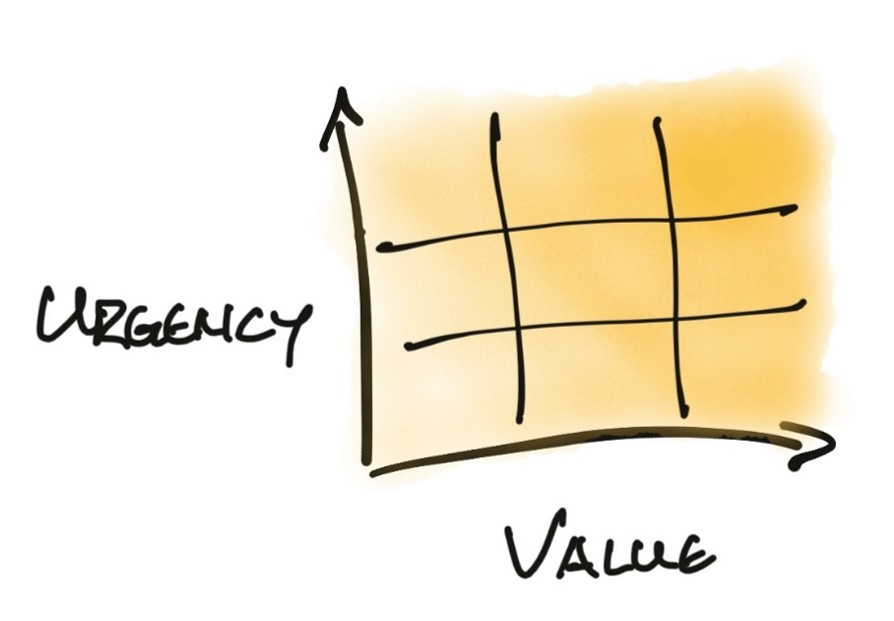
It defines three different levels for both value and urgency and Black Swan Farming describes them as follows:
Value:
- Bonus: Bonus could be those delightful things that our customers will like and buy.
- “Meh”: This is the pocket change stuff. Nothing our customers will rave about.
- “Killer”: These are the few things where if we do them, we can make an absolute killing, or; if we don’t, it will probably kill us.
Urgency:
- “ASAP!”: If we don’t deliver this ASAP, the value will quickly evaporate (could mean big business risks)!
- Soon: If we don’t deliver this Soon, the value will start to diminish or the risk of loss will increase – reduced market share etc.
- “Whenever”: Overall value won’t be massively affected by delay. Most cost reduction initiatives would normally fall into this band.
Our experience with these level definitions is that everything tends to cluster in the top right-hand corner because nobody sees “their” tasks as “Meh” or “Whenever”. To avoid this, you can either ignore the levels altogether, or define the values as High, Higher, Highest, and the urgency as Deadline passed, ASAP, Soon. This calms people down, and you don’t put them in fight mode from the start just to avoid being in the bottom left. Wherever you put it, it will appear as a high value. Defining the levels in this way doesn’t affect the result of the prioritisation at all!
How to get going
We typically help our clients get started by running this as a 2-hour workshop, going through the steps below and using the value and urgency areas. During this time, you should be able to prioritise about 10-15 tasks.
Typical participants
Participants should have the primary business and/or technical responsibility for the area, unit, or product, depending on the level at which the tasks reside.
For example: Business owners, area responsible for company-wide decisions or stakeholders/product owners of individual products.
Formats
Whiteboard & post it’ or electronic boards like Miro or Mural
Steps
- Explain the two components of the qualitative cost of delay and define areas of value and urgency.
- The person with the most knowledge about a task gives an ‘elevator pitch’ to prioritise it, giving all participants information about its value and urgency. The information on value and urgency should be quantifiable and not based on ‘gut feeling’.
- Participants discuss the order of priority of the tasks one by one, compare them against each other and rank them by value.
- In a second step, the participants discuss the order of priority based on urgency.
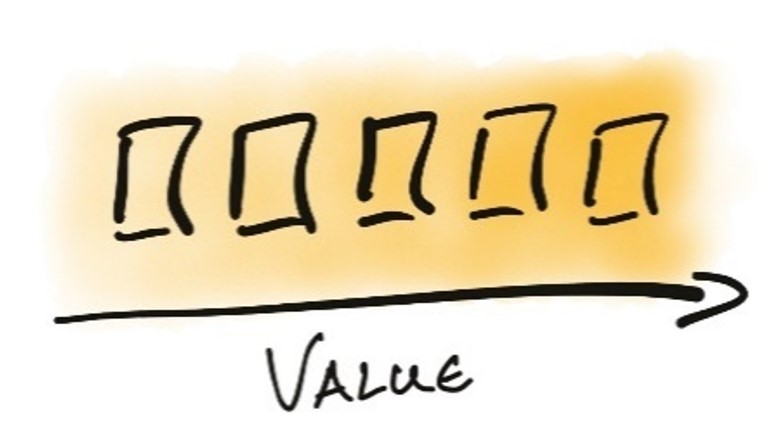
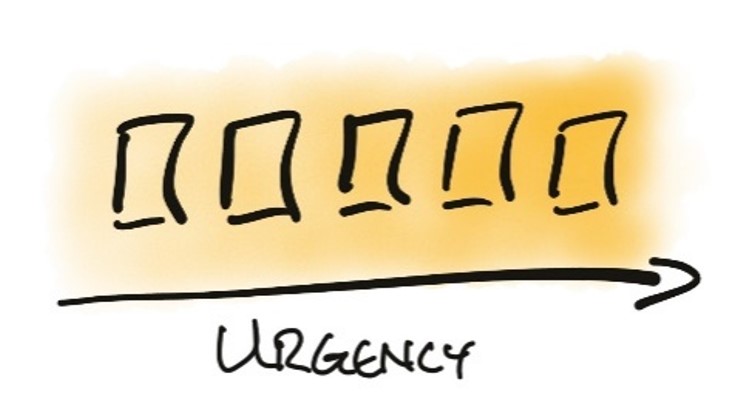
Please note! The items are ranked relative to each other and not on a fixed scale. Participants must have a company mindset and not focus on a single task or their area.
There should be a clear ranking, avoiding tasks having the same priority.
The result of the value and urgency classification is mapped onto the “3×3 Qualitative Prioritisation Matrix”.
- Features in the top right have the highest priority
- Features in the lower left have the lowest
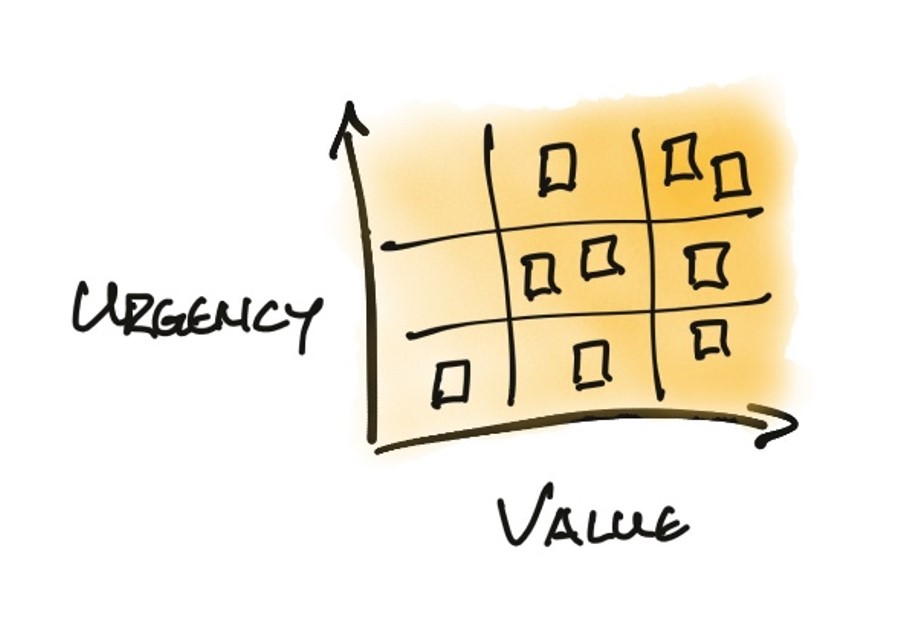
Guidance for the facilitator
As a facilitator it is important to ensure that value and urgency are not intermixed. Remind the participants when they argue about urgency when you are looking and value and vice versa.
Be curious: Ask? Have we got a companywide perspective? What is best for the whole?
Value
- How many customers will be affected?
- What kind of customers?
- What is the benefit to the business?
- What risks are we mitigating?
- What knowledge do we gain?
Urgency
- Deadline: What kind of deadline is it?
Sometimes there are deadlines that have been created internally just as a touchpoint on the status but are not linked to any external release or event. - What happens if we don’t make it?
- Is a penalty connected to it?
Note: The workshop needs to be run at a regular cadence once it has been learnt and used. Qualitative prioritisation is dynamic and changes over time. This means that in most cases the value of tasks will gradually decrease, or the urgency will increase. That’s why it is important to update the “3×3 Qualitative Prioritisation Matrix” frequently.
Optional step: Mapping to Fibonacci number and WSJF
If the organisation uses WSJF and wants to continue using it, this technique can help speed up the WSJF work by extending the “3×3 Qualitative Cost of Delay Matrix”.
- Assign a Fibonacci value according to the defined mapping. You can use the full Fibonacci sequence (1,2,3,5,8,13) or simplified as in the example to increase the granularity per domain.
- Insert Value and Urgency into the WSJF formula used and set Risk Reduction (RR)/Opportunity Enablement (OE) to 0.
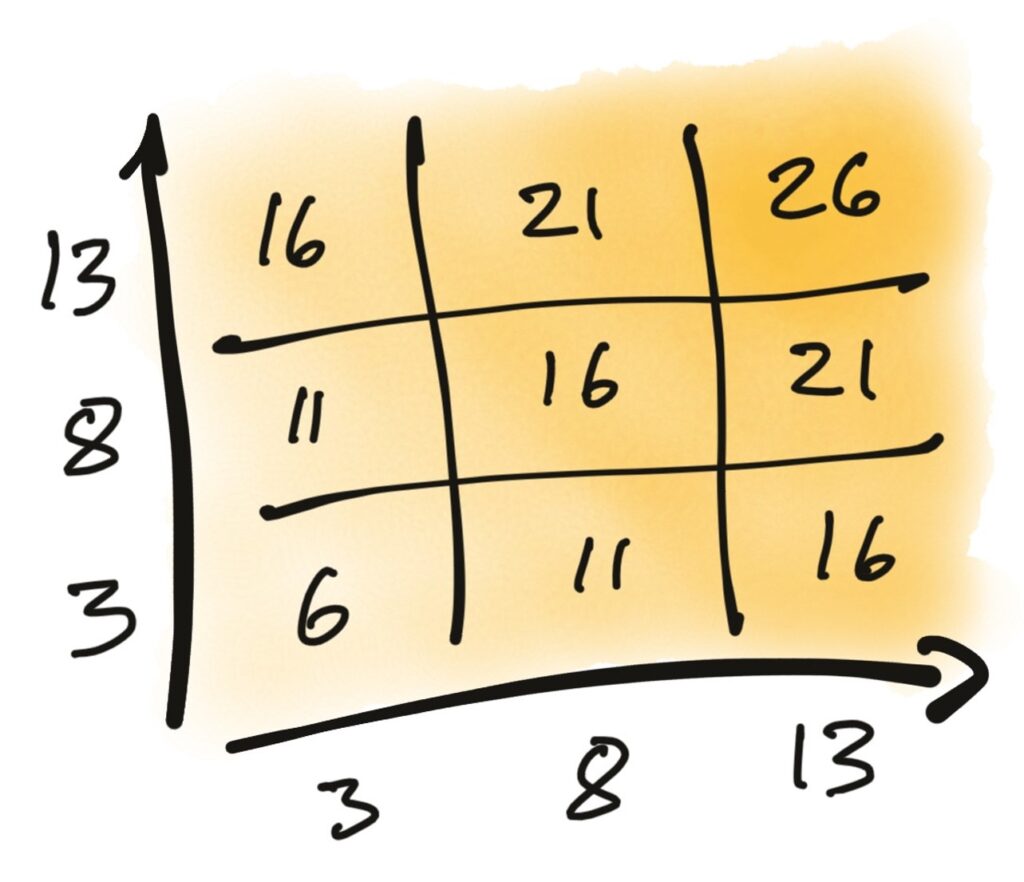
Our experiences (from the field)
We have used this method mostly in a SAFe context with
- ARTs that have been running for a while and used the WSJF method described in SAFe.
- Newly started ARTs where the BO/stakeholders were not used to cost of delay/WSJF prioritisation.
The feedback from both groups (ARTs) was very positive. We received statements such as:
“The prioritisation is more visible and it’s easier to get an overview!”
There will still be lively discussions and tough decisions to be made, but that’s the whole point of the exercise – isn’t it 😉?
TIP: It’s a good idea to do a first draft priority sorting of the features before the exercise, e.g. from product management (who won’t have a vote in the exercise), so you don’t start from a blank page.
Regulatory requirements and their deadlines are often taken as “no discussion”, we have to do it. This is not really the case. You still have the choice to be non-compliant and accept a penalty if there is something that outweighs it.
And be honest – have you always been 100% compliant and met the deadlines set for regulatory requirements? In our experience, it is not black and white, so why exclude regulatory requirements from the prioritisation and discussion?
Wrapping Up
If you are interested in finding out more about Qualitative Prioritization or would like some help in trying it out, you can contact us at info@thinkflow.se.
Downland a PDF with exercise instructions:
References
- Cost of Delay (Don Reinertsen)
- Qualitative Cost of Delay from Black Swan Farming:
- SAFe WSJF prioritization:
Authors

Dirk Holste

Anders Jonsson

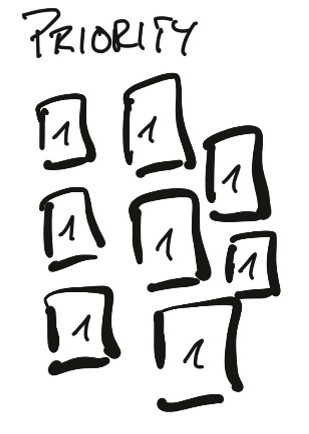

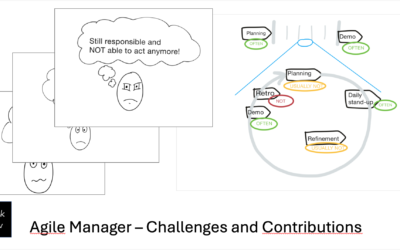
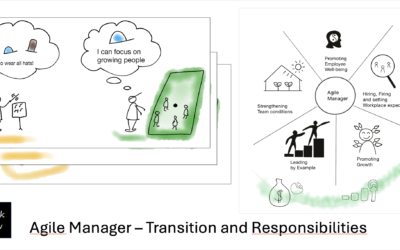


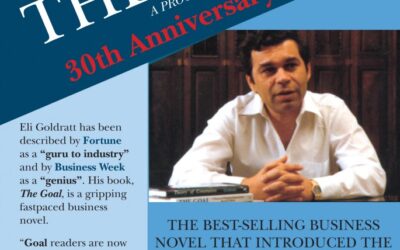
0 Comments